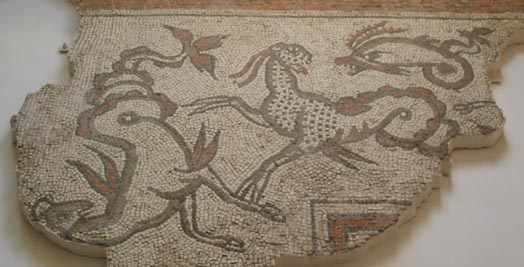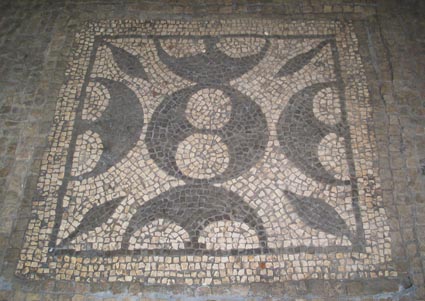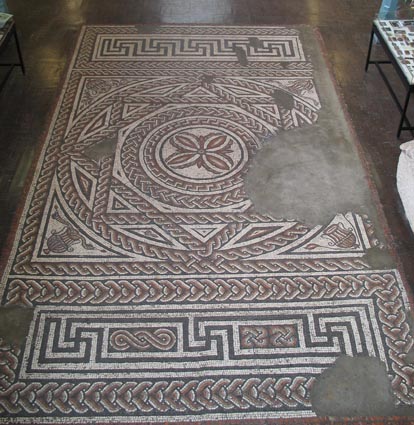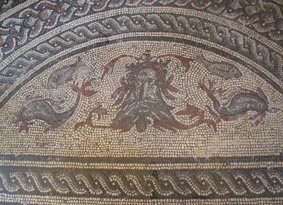Roman mosaics in Dorchester
Dorset County Museum in Dorchester has a collection of twelve Roman mosaics and several of the larger ones are featured on these pages. The three largest mosaics are laid as pavements in the museum, to be walked on. It is wonderful to be able to experience these original ancient works of art underfoot, just as the people of Roman Britain would have done.
These photos, taken at Dorset County Museum, are shown by kind permission and may not be reproduced elsewhere.
Dorchester was known to the Romans as "Durnovaria" and was a local centre for mosaic making in this part of southern England. The workshop (or "officina") based at the town is identified by various design features. A frequent theme was sea gods and marine creatures as in the example below, discovered in 1975 at Dewlish. It shows a procession or parade (a "thiasos") of sea creatures. It is thought to have been made in the 4th century AD, and was found to have been laid over an earlier geometric mosaic (probably from the 2nd century AD).
 |
 |
This relatively simple mosaic was originally part of a bath in a Roman villa. The design features the pelta - the semi-circular shield shape. |
|
The Fordington High Street mosaic shows a sea god and fishes. It also has extensive decorative geometric sections. |
|
 |
This large geometric pavement was found in Durngate Street in 1905. It has complex design and a number of unusual features. Also laid in the Victorian Hall of the museum is a mosaic from Olga Road the Roman townhouse, Dorchester back to list Click for a list of other Roman mosaics you can see on this site
|
the joy of shards Mosaics Resource
